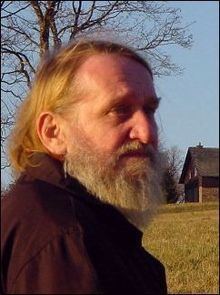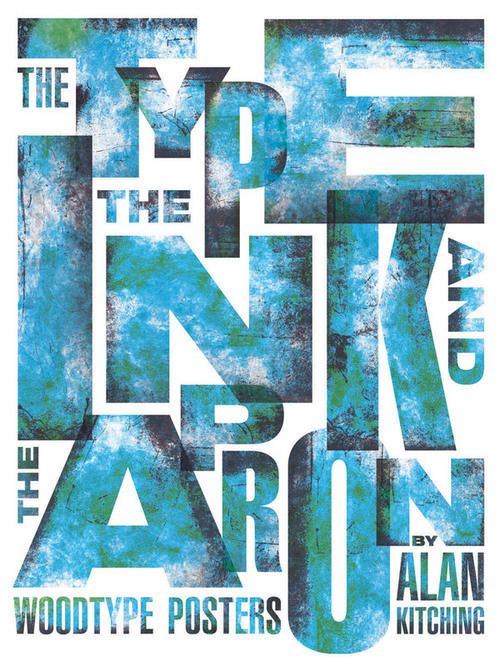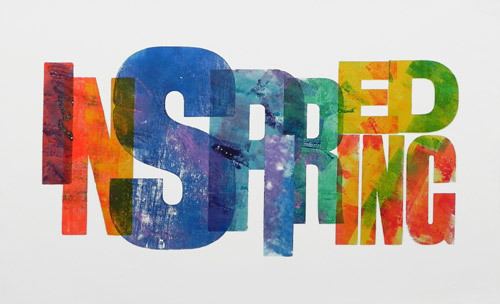Nationality English | Name Alan Kitching | |
 | ||
Occupation designer, animator, architect, software developer Website antics1.demon.co.uk/ATK_biog.html | ||
Alan kitching artist designer typographer
Alan Thomas Kitching is a British graphic designer, animator, architect and software developer, who is perhaps best known for his pioneering work in computer animation, creating the Antics 2-D Animation software in 1972.
Contents
- Alan kitching artist designer typographer
- Beauty in the making the maker alan kitching
- Early life
- Early Animation career
- The Birth of Antics
- Developments in Japan
- Establishing the Home Studio
- Moving into Multimedia
- Lanzarote and the New Antics
- Filmography
- References

Beauty in the making the maker alan kitching
Early life

Alan Kitching grew up in the London suburb of Wimbledon, and was educated at King's College School, Wimbledon. There, in 1963, he was awarded an Open Scholarship to Corpus Christi College, Cambridge, where he chose to read Architecture.
In the year's gap between school and Cambridge, he worked as assistant to animator Trevor Bond, where he undertook a range of projects from commercials and educational productions, to feature film titles, including a couple of early James Bond movies.
While pursuing architectural studies, Kitching also continued promoting his enthusiasm for the animation medium, including working with Richard Arnall to help organise the first-ever British Animation Festival, in 1965.
In 1967, after completing studies in Cambridge, Kitching went to work with architect John Hornby in Wimbledon, undertaking a diverse range of private projects—from refurbishing the offices of a firm of parliamentary lawyers, to housing estates in Amersham and Beckenham, the conversion of a medieval barn in Sussex, and restoration of a listed Tudor cottage in Selborne. In 1969, he went on to work with Frederick MacManus and Partners, in Marylebone, specialising in architectural graphics, photography and signage, on freelance projects in public housing and healthcare.
Early Animation career
In 1969, Kitching also collaborated with veteran Hungarian-born British animator John Halas, who had given him a pre-war 35mm animation rostrum camera. With this, he produced "The Dream of Arthur Sleap", a cinema commercial for the British Film Institute (BFI), and "Auntie Takes A Trip" for the British Kinematograph, Sound and Television Society (BKSTS).
In 1970, he directed and animated "No Arks" for the BFI Production Board, a film based on a story and cartoons by Abu Abraham (the then political cartoonist of The Observer newspaper), with narration by Vanessa Redgrave.
In the same year, he also published "An Animation Primer"—an overview of animation technique, which formed one section of a larger part-work publication "The Craft of Film" from Attic Publishing Ltd.
From 1971, Kitching also published a number of articles in the BKSTS Journal on animation and media in general, including "Computer Animation – Answer or Problem?" in which he examined the possibilities offered to animators by emerging computer graphics techniques.
The Birth of "Antics"
In 1972, this led to an invitation from computer artist Colin Emmett for Kitching to join him at the Atlas Computer Laboratory to try programming, using Fortran.
By early next year, he had completed a general-purpose animation program, which he named "Antics". This he subsequently used for numerous animation works, culminating in the 1975 film "Finite Elements", a documentary explaining the mathematical principles of the Finite Elements method for computing engineering simulations, and how it had been used at the Atlas Lab.
Kitching first presented the Antics system at the BKSTS "Film 73" conference in London, and it was then published in the BKST Journal of December 73. In 1974 Kitching was awarded the Society's "Denis Wratten" award for technical achievement of the year.
Around 1975, he first met Czech interior designer Eva Gloss, recently emigrated to Britain from (then) Czechoslovakia, who was later to become his partner. Also at this time, Kitching founded "Grove Park Studio Animations".
Further articles and presentations followed, including one to the Swedish Film Institute in Stockholm, which led to Kitching being invited by Swedish TV (then Sveriges Radio – 'SR') to undertake a full-scale prototype project to develop a new version of Antics that would be fully interactive, so that it could be used by any complete beginner without technical knowledge. The project ran from 1977 to 1979, culminating in the movie "The Story of G".
Developments in Japan
In 1980, Japanese computer maker Nippon Univac Kaisha (NUK) invited Kitching to set up a further Antics development project in Tokyo, to make use of the newest full-colour hardware and VTR equipment. This project ran between 1980 and 1982, and now made the system fully commercial. The first user system was installed at Nippon Animation, and more studios followed—a dozen or so in Japan alone.
In 1983, Kitching met again with Eva Gloss, who had been producing hand-made ceramic dolls in Southampton, but was now living in London, and the two became partners.
Later in the year, in conjunction with Tokyo graphic designer Yukio Ota, Kitching produced a movie for the United Nations University (UNU), with a commentary by Peter Ustinov. Kitching made the film at NUK, with the assistance of Eva Gloss. Titled "Sharing for Survival", the film completed early 1984.
Establishing the Home Studio
In 1985, the DEC "MicroVax II" became the first mini-computer powerful enough to run Antics, yet also run from a normal domestic power socket. Kitching soon installed one at home, so for the first time had his own Antics studio, and was able to continue its development.
In subsequent years, two further new hardware platforms for Antics became available, from Silicon Graphics and Apple Macintosh. With these, many new Antics studios sprang up in Europe, USA, and beyond. In 1989, Kitching was awarded a Fellowship of BKSTS.
Moving into Multimedia
In the early 1990s, hardware costs were coming down just as performance speeds were increasing. Kitching saw that Microsoft's Windows PC platforms would soon be suitable for Antics, and began concentrating on the emerging market of PC multimedia production.
By the late 1990s, the advent of powerful PC and other graphics-based machines were making older systems obsolete, and Kitching saw that this would require a complete new version of the Antics software, using a different design language (C++) – a large-scale project, beyond current resources.
Instead, Kitching concentrated on a new field, using computer graphics for scientific modelling of architectural designs for how people move through large public spaces. From 1998, Kitching worked with Legion Crowd Dynamics, and from 2001, with Prof G.Keith Still.
Lanzarote and the New Antics
In 2004, Kitching and Eva Gloss left Britain to move both to the Czech Republic and to the Canary Isles, exchanging their London home for a cottage in the Czech mountains, and a villa in Lanzarote. Alternating between the Czech cottage and Lanzarote, the couple refurbished the cottage, eventually selling it to move permanently to Lanzarote in 2009.
Meanwhile, in 2006, Kitching determined that Antics software still had no close rival on the market, and could now concentrate fully on developing a new 21st-century version, dubbed "Antics Classic++". The first version of this for Windows was launched for download in 2010, and further updates completed it for the Summer 2011 Edition. Kitching subsequently continued developing the concept, with additional new updates issued periodically, taking it to new functionality beyond the original Antics "Classic" concepts.
